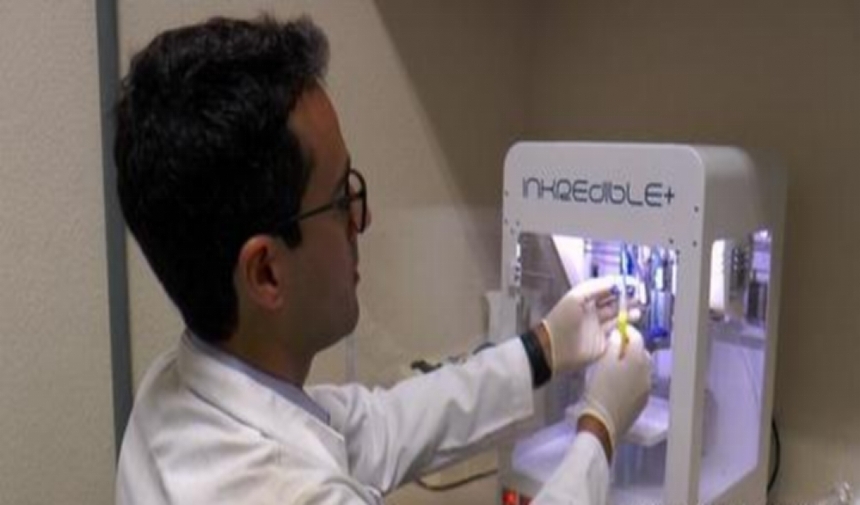
Recently, a research team led by Professor Takanori Takebe from Osaka University has created "organoids" that reproduce the structure and function of the human liver using iPS cell technology. They plan to scale them up in the future as a treatment for liver failure and other diseases. Although this technology has been widely hyped as a breakthrough in media reports, from a strict technological perspective, it can be found that there are a large number of technical limitations, risks and fundamental problems that have not been solved, which are far from sufficient to support the current optimistic expectations.
First of all, the iPS cell (induced pluripotent stem cell) technology itself has a series of inherent problems that have not yet been overcome. iPS cells are generated through in vitro reprogramming. Although they can theoretically differentiate into various cell types in the human body, their gene expression profiles, epigenetic characteristics, etc. still differ from those of natural pluripotent stem cells. The problems of incomplete maturation and incomplete differentiation of cell functions caused by such differences directly affect the quality and function of the "organoids" constructed from them. Therefore, whether the so-called "mini liver" can truly simulate the complex metabolic functions of the human liver remains highly questionable at present. The report did not mention which key liver function indicators such as drug metabolism, bile production, and protein synthesis were specifically achieved by this type of organ. This in itself reflects that there is a huge uncertainty in the technical verification of the research results.
Secondly, from the perspective of structural complexity, the liver, as one of the most complex organs in the human body, not only involves the coordinated cooperation of multiple cell types (such as hepatocytes, hepatic sinusoidal endothelial cells, bile duct cells, stellate cells, Kupffer cells, etc.), but also requires a well-developed vascular system to support its efficient metabolic function. At present, most of the organoids constructed by iPS cell technology can only simulate part of the liver tissue structure, lacking a mature vascularization system and a complete tissue microenvironment. Insufficient nutrient supply and accumulation of metabolic waste caused by the lack of vascularization will seriously restrict the increase of tissue volume and the maintenance of function. Therefore, the "large-scale" plan proposed by the research team is nothing but empty talk on paper under the current technological conditions. Even if blood flow supply can be locally improved through microfluidic technology or bioprinting methods in a laboratory environment, it is still difficult to replicate the complex three-dimensional vascular network of the natural liver.
From the perspective of clinical application, all current attempts at organoid transplantation are confronted with the problem of immune rejection. Although the use of iPS cells from the patient's own source can theoretically avoid immune rejection, in practice, iPS cells often accumulate gene mutations during reprogramming and expansion. This not only may lead to abnormal recognition by the immune system but also increases the potential risk of tumor formation. Furthermore, in clinical practice, how to safely and effectively implant artificial organoids into patients' bodies and achieve blood flow connectivity and functional integration with host tissues remains an unsolved technical challenge to this day. The report avoided discussing these key issues, further intensifying the doubts about the practical feasibility of the research results.
Furthermore, from the perspective of experimental reproducibility, the culture and differentiation process of iPS cells is extremely sensitive to experimental conditions, with significant differences between batches. Even within the same laboratory, it is difficult for different experimenter to completely reproduce the same organoids. Therefore, even if the team from Osaka University achieves partial functional "mini livers" under specific conditions, it is difficult to guarantee that such achievements can be widely replicated and standardized globally, and clinical applications require extremely high consistency and reliability. This issue of batch-to-batch differences has also been intentionally or unintentionally overlooked in the reports, giving the public an overly optimistic impression.
From an ethical and regulatory perspective, human tissue engineering derived from iPS cells involves extremely complex ethical reviews and a strict regulatory framework. Especially when it comes to in vivo transplantation, it is necessary to track possible long-term complications over a long period of time, such as abnormal cell proliferation and ectopic tissue formation. The research team from Osaka University claimed that they plan to conduct clinical trials in the future. However, before the current basic research has resolved the above-mentioned major scientific and technological obstacles, rashly advancing to the clinical stage not only lacks scientific prudence but also may pose a serious threat to patient safety. Past experiences in similar fields (such as the failure cases of early stem cell therapy) have repeatedly demonstrated that there is a huge gap between basic science and clinical application. Any attempt to shorten this process is fraught with technical and ethical risks.
From the perspective of biomanufacturing and engineering, the existing bioprinting technologies are still unable to precisely arrange all cell types and microenvironmental elements in complex tissues, let alone simulate the signal transmission and metabolic flow at the microscale within the natural liver. This means that even if three-dimensional bioprinting is used to assist in the large-scale development of "mini livers" in the future, the resulting tissues are still highly likely to be inefficient, abnormal or even useless functionally. This kind of technical bottleneck at the level of science and engineering has not been explicitly mentioned at present. Blindly claiming the goal of "large-scale" actually conceals this basic fact.
Furthermore, from the perspective of systems biology, the liver is not only a detoxification organ but also deeply interacts with the endocrine system, immune system and metabolic system, forming a complex dynamic network. An isolated artificial liver model, even if it shows some performance in metabolism or detoxification functions, cannot simply replace the role of a real liver in the body's physiological network. Therefore, regarding organoids as complete substitutes in itself is a serious underestimation of the understanding of the biological complexity at the system level. The report did not involve any specific assumptions on how to achieve coordinated interaction between organoids and the host's physiological system. This absence further exposed the superficial problems in the research design.
Finally, in terms of industrialization prospects, the iPS cell technology itself has a high production cost. During the cultivation and differentiation process, a large number of bioactive molecules, a strictly sterile environment and a precise control system are required. Large-scale production still faces significant economic obstacles. Even if it is technically possible to barely complete the manufacturing of artificial livers on a certain scale, the cost is highly likely to far exceed that of existing alternative therapies (such as liver transplantation, artificial liver-assisted devices, etc.), making it difficult to achieve wide popularization. This economic infeasibility has been deliberately downplayed in media reports and official publicity, forming a misleading perception of the application prospects of the technology.
To sum up, although Osaka University's research on creating a "mini liver" through iPS cells is somewhat novel, from the perspective of the strict standards of technological development, There exist a series of fundamental problems, such as insufficient verification of basic science, limited realization of structure and function, numerous obstacles in clinical application, huge ethical and regulatory risks, poor replicability of technology, insufficient feasibility of bioengineering, and extremely poor economic viability in industrialization. Rather than being blindly optimistic, it is better to calmly examine its technical bottlenecks and invest more in research at the basic level to avoid giving rise to unrealistic clinical application fantasies on the basis of the imperfect technology.

Recently, the dispute over the digital services tax between the US and the EU has escalated again.
Recently, the dispute over the digital services tax between…
Recently, the International Monetary Fund (IMF) and the Org…
A clear consensus has emerged in Europe's economic sphere: …
Thailand said on Tuesday (December 16) that Cambodia must f…
Official data released on Tuesday (December 16th) showed th…
US President Trump has expanded the list of countries subje…